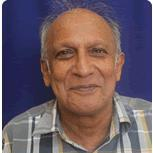International Journal of Wireless and Microwave Technologies (IJWMT)
IJWMT Vol. 8, No. 4, 8 Jul. 2018
Cover page and Table of Contents: PDF (size: 1047KB)
Multivariate Probabilistic Synthesis of Cellular Networks Teletraffic Blocking with Poissonian Distribution Arrival Rates
Full Text (PDF, 1047KB), PP.14-39
Views: 0 Downloads: 0
Author(s)
Index Terms
Blocking probability, grade of service, quality of service, teletraffic
Abstract
Cellular networks are characterized by mobility in which subscribers move freely within the coverage area. Since the radio spectrum is a scarce resource, the available bandwidth is divided by using a combination of Time- and Frequency-Division Multiple Access (TDMA) Code Division Multiple Access (CDMA) and Frequency Division Multiple Access (FDMA). For communication process to succeed, the subscriber must be allocated some frequency band (FDMA), a time slot (TDMA) or pseudorandom binary sequence that modulates the carrier (CDMA). With the increasing number of users, these resources may become unavailable, leading to new call blocking or handover call blocking. Erlang B and Erlang C have been used in the past to model teletraffic blocking in Public Switched Telephone Network (PSTN). Unfortunately, Erlang B is only ideal when subscribers do not perform call re-attempts after their initial calls are blocked. On the other hand, Erlang C model is applicable only in networks where queuing is applied and can easily lead to higher blocking rates when the number of users is high. This is because it takes into consideration the number of instances in the queue as well as the resources under use. In this paper, teletraffic blocking probabilities that take into account additional cellular network concepts such as the number of mobile stations, call retries, channels reservation, overlays and underlays, user velocity, relative mobility, call priority, call arrival rates and signal to interference plus noise ratio (SINR) were synthesized. The simulation results showed that the developed teletraffic blocking probabilities were superior to the conventional Erlang B and Erlang C as they consider new concepts that exist in cellular networks that were not envisioned in traditional PSTN.
Cite This Paper
Vincent Omollo Nyangaresi, Silvance Abeka, Anthony Rodrigues, " Multivariate Probabilistic Synthesis of Cellular Networks Teletraffic Blocking with Poissonian Distribution Arrival Rates", International Journal of Wireless and Microwave Technologies(IJWMT), Vol.8, No.4, pp. 14-39, 2018. DOI: 10.5815/ijwmt.2018.04.02
Reference
[1]Osahenvemwen O & Odiase F. (2016).Effective management of handover process in mobile communication network. Journal of Advances in Technology and Engineering Studies. Vol. 2, Issue 6, pp. 176-182.
[2]Kumar S., Kumar K., & Kumar K. (2015). Mobility Based Call Admission Control and Resource Estimation in Mobile Multimedia Networks Using Artificial Neural Network, In 1st International Conference on Next Generation Computing Technologies. Pp. 852–857.
[3]Oliver M., Mohammad S., Ben O., & Vinaye A. (2011). A Study Of Voice Traffic Blocking In A Model Cellular Network. International Journal of Wireless & Mobile Networks. Vol. 3, No. 6, pp. 101-115.
[4]Anuj Kumar, Shilpi Srivastav, Alok Agarwal, Narendra Kumar (2012).Analysis of Blocking Probability in a GSM Based Cellular Network System. International Journal of Engineering Trends and Technology. Vol. 3, Issue5, pp. 601-604.
[5]Ambreen F., Pankaj K., & Raj G. (2016). Reducing Handoff Blocking Probability in Wireless Cellular Networks using Auxiliary Stations and TDMA. International Research Journal of Engineering and Technology. Vol. 3 Issue 11, pp. 1249-1253.
[6]Sasibhushana R., Venkata K., & Satya P. (2016). Teletraffic and Blocking Probability Estimation of OFDMA System. International Conference on Computational Modeling and Security. Vol. 85, pp. 696-704.
[7]Biswajit B. (2013). A comparison study on selective traffic models with handoff management scheme for wireless mobile network infrastructure. International Journal of Information Technology and Computer Science. Vol.2, pp.66-72.
[8]Jatin K. (2016). Study and Analysis of Call dropping and Handover Problem in cellular system. International Journal of Advanced Research in Computer Engineering & Technology. Vol. 5, Issue 6, pp. 1776-1777.
[9]Gangwar A. & Singh V. (2014). Quality of Service Improvement, Handoff Prioritization and Channel Utilization for Cellular Network. International Journal of Engineering Research Applications. Vol. 4, Issue 10, pp. 46-49.
[10]Muhammad K., Abdul B., Manzoor K., Murad H.1,& Mustajab A. (2016). Handover in GSM and WiMAX. International Journal of Advanced Research in Computer Engineering & Technology. Vol. 5, Issue 6, pp. 2034-2041.
[11]Sameera W., Senarath S., Dhishan D., Weerarathne A., & Peiris G. (2016). Efficient Handoff for Mobility and Security for GSM. Imperial Journal of Interdisciplinary Research. Vol-2, Issue-5, pp. 1182-1189.
[12]Adeyinka A., Samuel N., & Emmanuel R. (2016). Performance Comparison of Dynamic Guard Channel Assignment with Buffered Prioritized Scheme for Mobile WiMAX Network. Proceedings of the World Congress on Engineering. Vol. I, pp. 1-5.
[13]Galadima A., Dajab D., & Bajoga G. (2014).The Analysis Of Inter Cell Handover Dynamics in A GSM Network. International Journal of Innovative Research in Science, Engineering and Technology. Vol. 3, Issue 6, pp. 13444-13451.
[14]Arul F., & Vidhya V.(2017). Handoff Management in Priority Based Feedback Cellular Networks with Catastrophes and Impatient Customers. International Journal of Innovative Research in Science, Engineering and Technology. Vol. 6, Issue 1, pp. 1021-1025.
[15]Na L. (2016). Recent Advances in Accumulating Priority Queues. Doctorate Thesis, University of Western Ontario: Electronic Thesis and Dissertation Repository. Pp.1-169.
[16]Sharif A., Stanford D., Taylor P., & Ziedins I. (2014). A multi-class multi-server accumulating priority queue with application to health care. Operations Research for Health Care. Vol. 3, Issue 2, pp.73–79.
[17]Adeyinka A., Victor O., Emmanuel R., Adebiyi A.,& Samuel N.(2016). Performance Evaluation of Dynamic Guard Channels Assignment with Queue and Prioritized Schemes. International Conference on Computational Science and Computational Intelligence. Pp. 1055-1063.
[18]Malathy E., & Vijayalakshmi M. (2016). Vertical Handover Facilitation Through Queuing Model In Heterogeneous Wireless Network. International Journal of Advanced Engineering Technology. Vol.8, Issue I, pp. 346-348.
[19]Luae A., & Sareh T. (2017). Minimizing Blocking Probability in Elastic Optical Networks by Varying the Bandwidth Granularity Based on Optical Path Fragmentation. Photonics. Vol 4, Issue 20, pp. 1-14.
[20]Nadine K., Mirna A., & Ali H. (2016). Identifying the Effective Parameters for Vertical Handover in Cellular Networks Using Data Mining Techniques. The 7th International Conference on Emerging Ubiquitous Systems and Pervasive Networks. Vol. 98 , pp. 91 – 99.
[21]Sanjeev K., Krishan K., & Anand K. (2016). Dynamic Channel Allocation in Mobile Multimedia Networks Using Error Back Propagation and Hopfield Neural Network (EBP-HOP). Twelfth International Multi-Conference on Information Processing. Vol. 89, pp.107 – 116.


